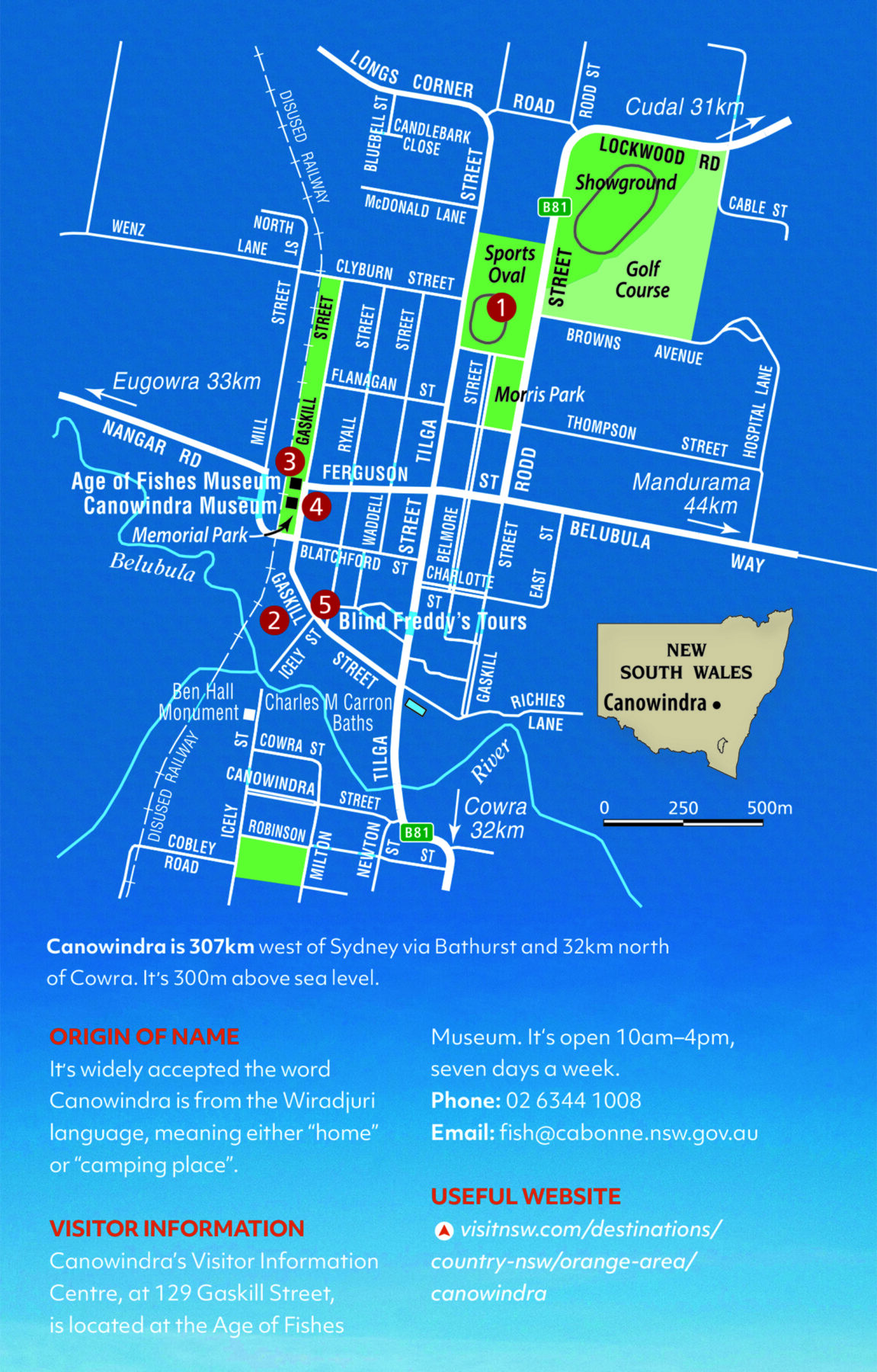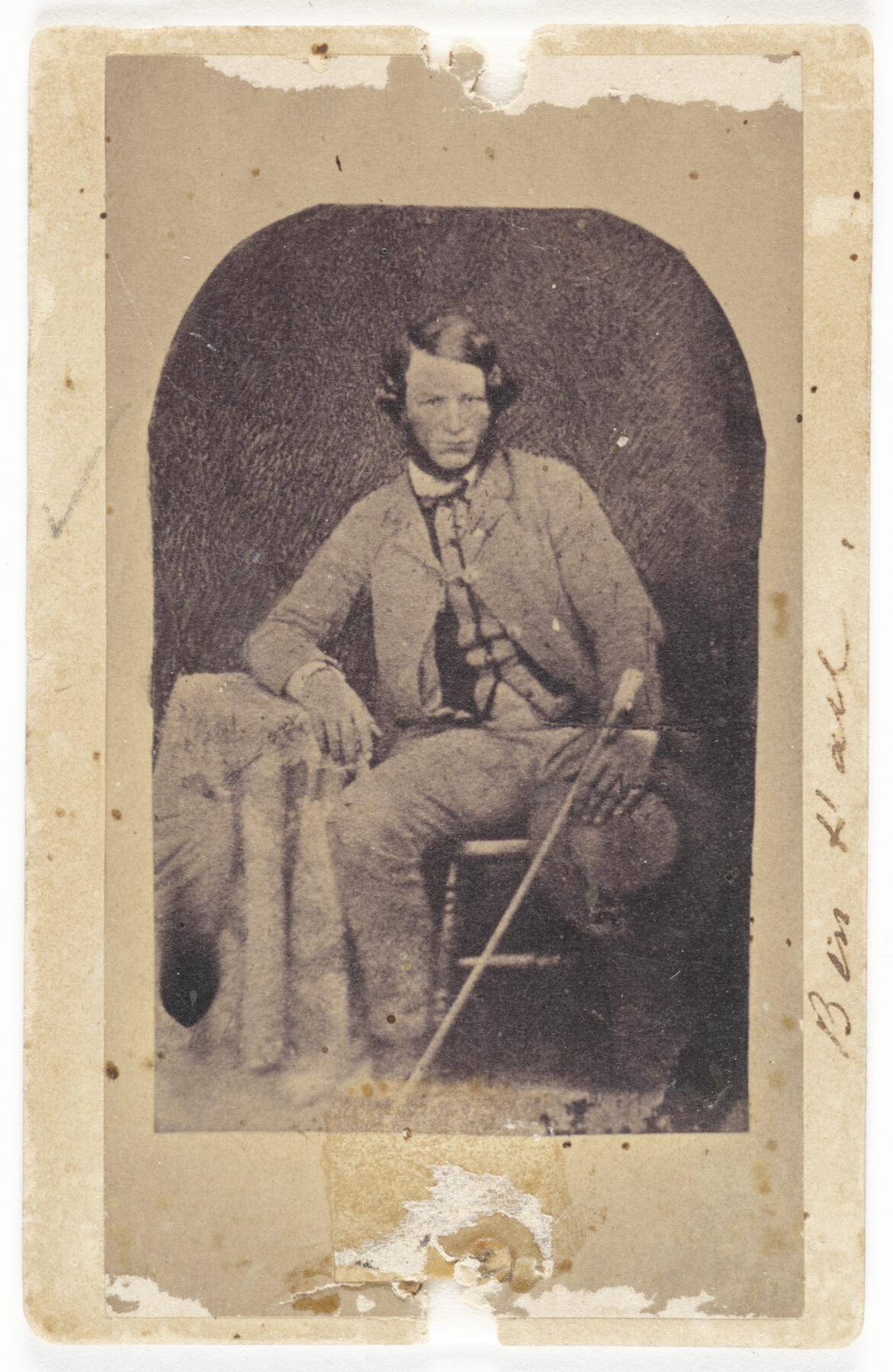A complete guide to Canowindra, NSW

Canowindra proudly describes itself as the hot-air balloon capital of Australia. A combination of gentle breezes, excellent thermals and beautiful, undulating countryside make it ideal for the pastime of ballooning.
Canowindra has an old-world charm, and it’s rich in both human and natural history. The award-winning Age of Fishes Museum, which has remarkable 360-million-year-old fish fossils on display, is one of the town’s major drawcards.
Canowindra’s main thoroughfare, Gaskill Street, is a genuine time warp, a curiosity that still follows the winding route of the old bullock track. The street’s commercial precinct, with its ornate verandahs and Victorian-era architecture, is listed by the National Trust as a Heritage Conservation Area.

The town was built on rich river flats and lies beside the Belubula River. Today, it’s a service centre for the fertile lands that surround the town, where lucerne, wheat, sheep, beef and canola are all successfully farmed.
Located between the larger centres of Orange and Cowra, Canowindra has featured often in film and television as a typical Aussie country town – most notably in an episode of the British TV show Inspector Morse, the 2003 American-Australian film Kangaroo Jack, and episodes of the ABC TV series Escape to the Country and Back Roads.
Places of interest
1. Hot-air balloon flights
Canowindra is proud of its reputation as Australia’s go-to place for hot-air ballooning. Floating above the countryside is a charming adventure – and definitely one of the best ways to experience Canowindra.
2. Experience Gaskill Street history
Gaskill Street, Canowindra’s main street, is something of a rarity – a former bullock track lined with architecture from the Victorian and Federation eras. Today, these beautifully preserved and restored buildings house boutiques and other local businesses. They include the Melissa Barber Galleries, Finns Store and Perennialle Plants Emporium Cafe and Nursery. Don’t miss the Royal Hotel, built in 1910 on the site of Robinson’s Hotel, which was famously taken over for three days by bushranger Ben Hall and his gang in 1863.
3. The Age of Fishes Museum

Canowindra’s 360-million-year-old fish fossils were discovered by chance in 1955, about 10km west of Canowindra. The fossils are some of the most significant from the late Devonian Period (383–359 million years ago). They formed when a body of water dried up during a drought, killing thousands of fish. Over time, the fish were covered in silt and buried for millions of years. Some 4000 fossilised fish from eight species have been discovered at the site, including armoured placoderms and lobe-finned fish. When Sir David Attenborough visited the award-winning Age of Fishes Museum in 2013, he described the collection of fossils as “world class”. The museum has some excellent hands-on educational displays and an exciting range of permanent exhibitions and activities.
4. Canowindra Historical Museum
Situated beside Memorial Park at 117 Gaskill Street, this museum – operated by dedicated volunteers – narrates the evolution of Canowindra from a frontier township to a pivotal rural center. Noteworthy exhibits include a shepherd’s hut c.1828, a fully preserved 1930s dental surgery, a collection of wedding gowns dating from the early 1880s, a reconstructed woolshed, 19th and 20th-century agricultural machinery, an extensive photo collection, and the Pioneers’ Wall.
5. Blind Freddy’s Bushranger Tours
Step back in time to the 1860s and discover Canowindra’s history and thrilling bushranger lore with Blind Freddy’s Bushranger Tours. Visit the locations where Frank Gardiner, Johnny Gilbert and Ben Hall roamed, robbed and roistered. There are a number of tours to choose from, including the Canowindra walking tour.
History
The district is home to the Wiradjuri First Nations people.
James Collits established a settlement at “Canoundra” in 1831.
By the 1840s Canowindra was a frontier settlement.
The post office opened in 1847 and the Canowindra Inn was built soon after.
The town was surveyed in 1860.
In 1863 Canowindra was twice raided by a notorious gang of bushrangers, led by Benn Hall (pictured).
In 1874 the first bridge across the Belubula River was built. The bridge was opened in 1875.
The Eugowra branch of the railway, leading to Canowindra, opened in 1910. Within a year the town’s population swelled to 1500.
In 1955 a rock slab bearing dozens of fossilised fish was discovered by a roadworker, about 10km west of the town.
In 1988, to mark the Australian Bicentennial, Canowindra hosted its first National Hot Air Balloon Championships.
A 1991 episode of the British detective series Inspector Morse was filmed in the town.
In 2013 Sir David Attenborough described Canowindra’s fossils as “world class”.
Image credit: Freeman Brothers/State Library of New South Wales

RELATED STORY: The best star gazing locations in 2021 in Central NSW





